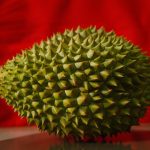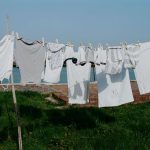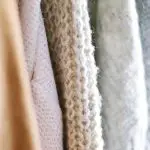Tired of your fabrics holding onto lingering odors? Keeping your fabrics fresh doesn't have to be a hassle. By incorporating cloth deodorizer solutions into your routine, you can easily maintain a pleasant and inviting environment in your home.
In this guide, we'll explore 5 effective ways to banish unwanted odors from your fabrics. From natural fabric deodorizer sprays to homemade fabric freshening sachets, you'll discover simple yet powerful techniques to keep your textiles smelling clean and revitalized.
Say goodbye to stubborn odors and hello to fresh, delightful fabrics with these easy-to-implement solutions.
Key Takeaways
- Homemade fabric deodorizer sprays with herbs and water can neutralize odors and leave a fresh scent.
- Homemade fabric freshening sachets filled with dried herbs or spices can keep fabrics smelling delightful.
- Baking soda can be used to eliminate odors from cotton and wool fabrics by sprinkling it on and brushing or vacuuming it off.
- Vinegar can be used as a fabric deodorizing soak and added to the rinse cycle during laundering to eliminate odors.
Natural Fabric Deodorizer Sprays
If you're looking for a natural way to freshen up your fabrics, try using a homemade fabric deodorizer spray. Herbal fabric deodorizer blends are an excellent eco-friendly alternative to commercial fabric sprays. Creating your own fabric deodorizer spray allows you to control the ingredients, ensuring that it's free of harsh chemicals and artificial fragrances.
To make an eco-friendly fabric odor neutralizer, start by choosing your favorite herbs such as lavender, rosemary, or mint. These herbs not only have delightful scents but also contain natural antibacterial properties. Combine these herbs with water and a splash of vodka or rubbing alcohol to create a fabric-safe deodorizer spray. The alcohol aids in the evaporation of the spray, leaving behind the herbal fragrance. Simply pour the mixture into a spray bottle, shake well, and then lightly mist it over your fabrics.
This natural fabric deodorizer spray isn't only effective at neutralizing odors but also leaves behind a fresh, botanical scent. It's a simple yet powerful way to keep your fabrics smelling clean and inviting without the use of synthetic chemicals.
Homemade Fabric Freshening Sachets
Consider creating homemade fabric freshening sachets as an additional natural and long-lasting method to keep your fabrics smelling delightful. Scented sachets are easy to make and can be placed in drawers, closets, or even hung in various spaces around your home to keep fabrics fresh and fragrant.
Here are some simple steps to make your own DIY fabric fresheners:
- Choose Your Scent: Select dried herbs, flowers, or spices such as lavender, rosemary, cinnamon, or cloves for a pleasant aroma.
- Prepare Your Materials: Gather small cotton or muslin bags, or make your own using fabric scraps and a sewing kit.
- Fill the Sachets: Combine your chosen scented ingredients and fill the sachets, tying them securely to prevent spilling.
- Enhance with Essential Oils: For an extra burst of fragrance, add a few drops of essential oils to the sachets.
- Refresh Over Time: To keep the scent strong, gently squeeze the sachets every few weeks to release more fragrance.
Making your own scented sachets not only keeps your fabrics fresh but also adds a personal touch to your home while utilizing natural and pleasant scents.
Baking Soda Odor Elimination Technique
Regularly sprinkle baking soda on your fabrics to effectively eliminate odors and keep them fresh. Baking soda is a powerful odor eliminator due to its natural alkaline nature, which helps neutralize acidic odors. The fine powder can penetrate fabric fibers, absorbing and neutralizing unpleasant smells. Here are some baking soda techniques and odor elimination strategies for different types of fabrics:
| Fabric Type | Baking Soda Technique | Odor Elimination Strategy |
|---|---|---|
| Cotton | Sprinkle baking soda liberally on the fabric and let it sit for at least 30 minutes before brushing or vacuuming it off. | To eliminate musty odors from cotton fabrics, add a cup of baking soda to the washing machine during the rinse cycle. |
| Wool | Lightly sprinkle baking soda on wool fabrics and let it sit for a few hours before gently brushing or shaking off the powder. | For wool items that cannot be washed, place them in a plastic bag with a cup of baking soda, seal it, and let it sit for a few days before shaking off the powder. |
| Synthetic Fabrics | Create a baking soda solution by mixing it with water and spraying it on the fabric. Let it dry before brushing or vacuuming off any residue. | To freshen up synthetic fabrics, add a 1/2 cup of baking soda to the laundry detergent during the wash cycle. |
These baking soda techniques and odor elimination strategies are effective ways to keep your fabrics smelling fresh and clean.
Vinegar Fabric Deodorizing Soak
To effectively deodorize your fabrics, start by preparing a vinegar fabric deodorizing soak. Vinegar benefits make it an excellent natural deodorizer and fabric care solution. Follow these steps to create a vinegar fabric deodorizing soak:
- Mix equal parts of white vinegar and water in a large bowl or bucket.
- Submerge the smelly fabrics in the vinegar and water solution, ensuring that they're fully covered.
- Allow the fabrics to soak for at least 30 minutes to an hour, depending on the intensity of the odors.
After soaking, launder the fabrics as usual, adding a cup of vinegar to the rinse cycle to further eliminate odors and refresh the fabrics. Air dry the fabrics outdoors if possible, as the fresh air can also help remove any lingering odors.
Vinegar's natural acidity helps to neutralize and eliminate odors, making it an effective and eco-friendly fabric deodorizing solution. By incorporating this vinegar fabric deodorizing soak into your fabric care routine, you can ensure that your fabrics remain fresh and odor-free.
Essential Oil Fabric Refresher Spray
Using essential oils in a fabric refresher spray can help in keeping your fabrics smelling fresh and clean. Making a DIY essential oil blend for your fabric refresher spray allows you to customize the scent while avoiding harsh chemicals found in commercial products.
Start by mixing 1 cup of water with 2 tablespoons of vodka or rubbing alcohol in a spray bottle. The alcohol helps the water and essential oils to disperse more evenly. Next, add around 10-15 drops of your chosen essential oils, such as lavender, lemon, or peppermint, for their natural deodorizing and antibacterial properties. Shake the bottle well before each use to ensure the oils are evenly distributed.
When applying the fabric mist, remember to hold the bottle about 6 inches away from the fabric and spray lightly, allowing the mist to settle and air dry. This fabric misting technique ensures that your fabrics are refreshed without becoming overly damp.
With this simple and effective method, you can easily maintain a pleasant and inviting atmosphere in your home while keeping your fabrics smelling delightful.
Frequently Asked Questions
Can These Fabric Deodorizing Solutions Be Used on Delicate or Special Fabrics Like Silk or Wool?
Yes, fabric deodorizing solutions can be used on delicate fabrics like silk and wool. Be cautious and always spot test before applying. Silk care involves gentle application, while wool maintenance requires a delicate touch to avoid damage.
How Long Do the Homemade Fabric Freshening Sachets Last Before Needing to Be Replaced?
Typically, homemade fabric freshening sachets last for 2-3 months before needing replacement. To maintain their efficacy, it's advisable to replace them within this timeframe to ensure your fabrics continue to stay fresh.
Will the Baking Soda Odor Elimination Technique Leave a Residue on the Fabric?
Yes, the baking soda residue is a possibility, but it can be minimized by properly applying and then thoroughly removing the baking soda. Its effectiveness in fabric deodorizing outweighs the concern for residue.
Can the Vinegar Fabric Deodorizing Soak Be Used on Colored Fabrics Without Causing Fading?
Yes, the vinegar soak can be used on colored fabrics without causing fading. However, it's important to test on a small, inconspicuous area first, especially with delicate fabrics, to ensure the deodorizing solution is safe.
Are There Any Essential Oils That Should Be Avoided When Making the Essential Oil Fabric Refresher Spray?
When making a fabric refresher spray, it's important to be cautious with essential oils. Some, like cinnamon and clove, can cause skin irritation or fabric staining. Stick to safe options like lavender or lemon for both aromatherapy benefits and fabric care.
- How Does Ring Spun Cotton Affect Garment Fit and Shape Retention? - August 13, 2024
- What Are the Challenges in Producing Ring Spun Cotton? - August 13, 2024
- Is Ring Spun Cotton Suitable for Plus-Size Clothing? - August 13, 2024







